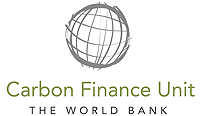Overview
The purposes of this project activity were: (1) to reduce GHG emissions by introducing an energy efficient brick making technology to manufacture FaL-G (fly ash-lime-gypsum) bricks and blocks as alternative building materials to the commonly used burnt clay bricks, which use fossil fuel for their production; (2) to reduce air pollution by avoiding the use of fossil fuel; and (3) to enhance the use of fly ash, an industrial by-product, as an ingredient of building material.
Benefits
The project promoted an eco-friendly technology for production of alternative building materials. By avoiding use of fossil fuel in the production process, the project contributed to conservation of energy and fossil fuel (coal). By displacing burnt clay bricks in the walling materials market, the project contributed to protection of the environment by minimizing eco-hostile activities such as topsoil denudation leading to land degradation and air pollution caused by emission of unprocessed flues. Furthermore, since the alternative building material was manufactured using industrial wastes and byproducts as raw materials, the environmental impacts associated with improper disposal of such industrial wastes were also mitigated by the project.
On social front, the project created business opportunities for the small and micro enterprises. In contrast to the seasonal production-operations in the clay brick industry, FaL-G plants have the advantage of continuous year-wide operation, and hence provided yearlong employment opportunity for the skilled artisans and create self-help livelihood opportunities for the illiterate poor.
The intrinsic environmental and social benefits of the project were further enhanced by a specific community benefit program, particularly the health and accident insurance schemes that are implemented to meet the requirements of the Community Development Carbon Fund of the World Bank. The project thus contributed to sustainable development in many ways.
Documents and project details
Technical documents related to the carbon standard can be found here - Project No.1, Project No.2, Project No.3.
Details on project preparation and implementation can be found here.
